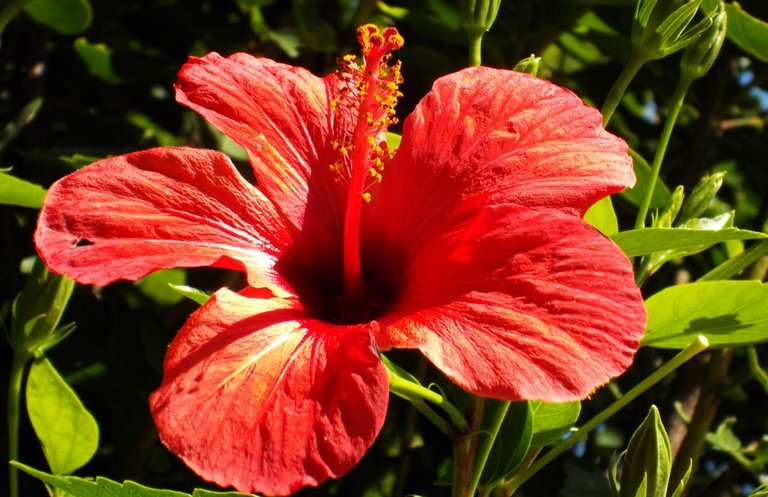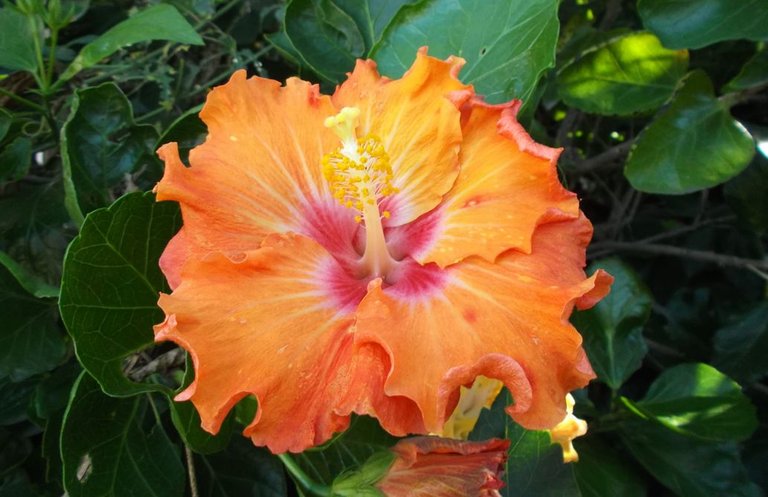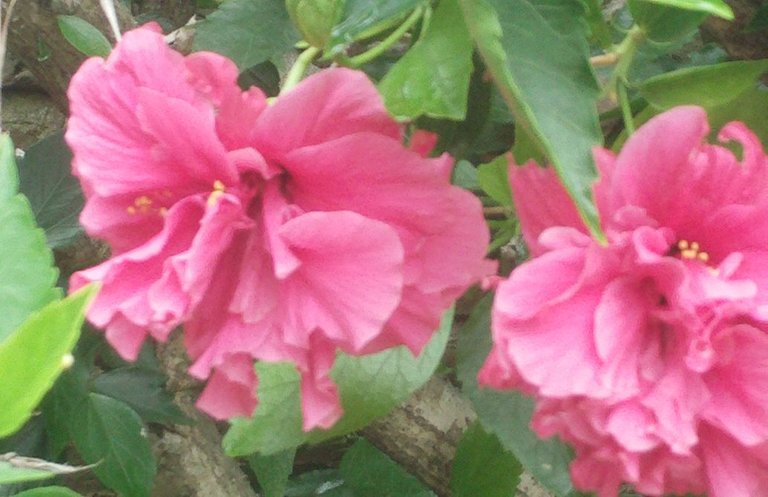Hibiscus flower is well known from the pictures of Hawaii, as one of them is its state plant. There are many varieties--different colors, single and double--and there are some cousins too like Turk's cap mallow (malvaviscus pendoliflorus).

Why am I putting all these plants in the same paragraph?
Three reasons: they are beautiful, some varieties like rosa sinensis flower all year around in temperate climate and they are edible.
I have four varieties of hibiscus in my garden and also the plant of malvaviscus. They are a joy to see, and bees love them.
Some time back I wrote an article about Zero Km Food.
In that article I introduce the subject of food as information and how eating something produced right where we are could help to protect us from the environment.

For many of us, eating all our food locally is very difficult. Yet, we can always have something that we grow ourselves and can equalize us with the place we live in.
An hibiscus plant will pass any scrutiny of any home owners association or any other local authority. If you have a patch of ground, you can have this beautiful plant.
The flower can be added to salads, and it's usually taken as tea. It has a tangy taste, very good. If you have a really big amount of them, you can make "hamburgers" (I saw people doing it, but never tried it myself). The flowers can be dried, or frozen.
The fact that it flowers all year around is a great help to have something from the garden for a tea all the time.

The young leaves are also edible, but edible and palatable are two different things. I personally don't like the texture as it's slimy. Some people dehydrate them and make them into flour. Again, haven't tried it myself so I can't report.
A bit of science:
Computational data of phytoconstituents from Hibiscus rosa-sinensis on various anti-obesity targets
pubmed.ncbi.nlm.nih.gov/31193691
Molecular docking analysis of twenty two phytoconstituents from Hibiscus rosa-sinensis, against seven targets of obesity like pancreatic lipase, fat and obesity protein (FTO protein), cannabinoid receptor, hormones as ghrelin, leptin and protein as SCH1 and MCH1 is detailed in this data article. Chemical structures of phytoconstituents were downloaded from PubChem and protein structures were retrieved from RCSB protein databank. Docking was performed using FlexX software Lead IT version 2.3.2; Bio Solved IT. Visualization and analysis was done by Schrodinger maestro software. The docking score and interactions with important amino acids were analyzed and compared with marketed drug, orlistat. The findings suggest exploitation of best ligands experimentally to develop novel anti-obesity agent.
Imgs: some flowers from my garden.
Congratulations @elearah1! You have completed the following achievement on the Hive blockchain and have been rewarded with new badge(s) :
Your next target is to reach 20 posts.
You can view your badges on your board and compare yourself to others in the Ranking
If you no longer want to receive notifications, reply to this comment with the word
STOPTo support your work, I also upvoted your post!
Check out the last post from @hivebuzz:
Support the HiveBuzz project. Vote for our proposal!
Voted!
Thank you for your support @elearah1, much appreciated!